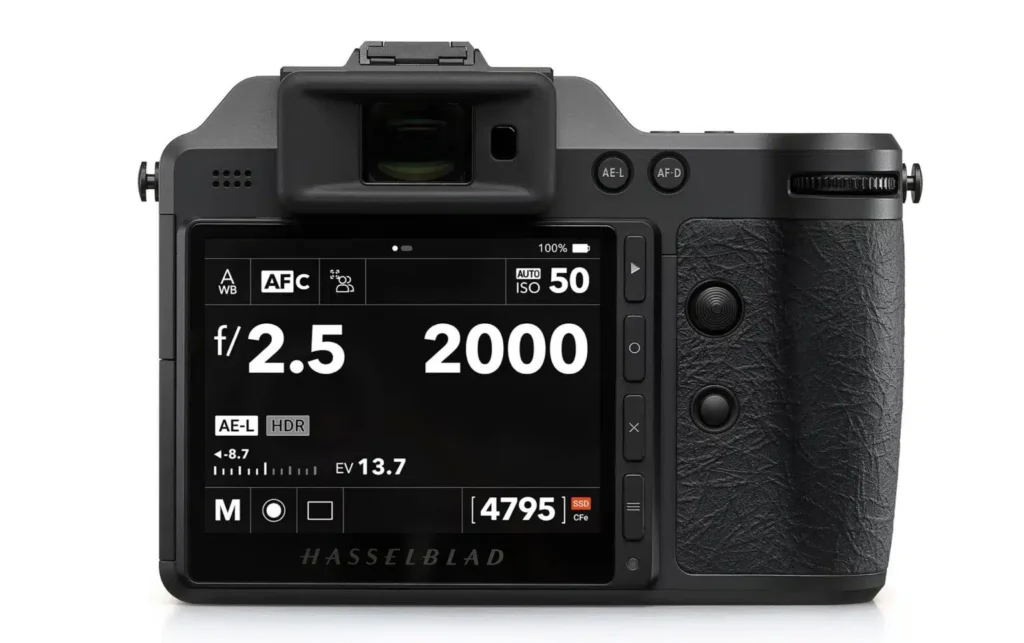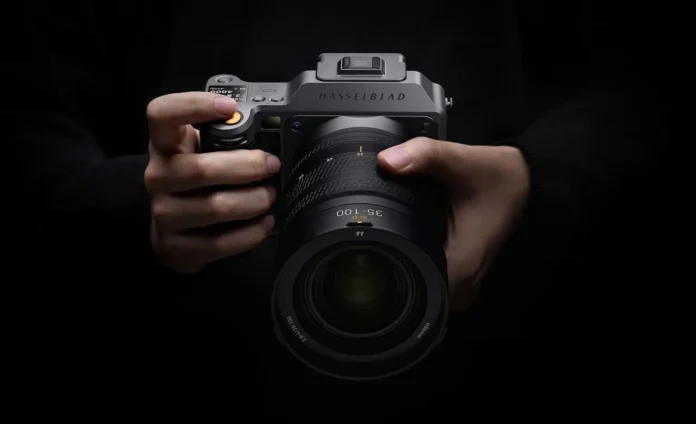The world of photography is constantly evolving, but only a few brands redefine what’s possible in imaging technology. Hasselblad, now majority-owned by DJI, has once again raised the bar with the launch of its X2D II 100C medium-format camera. Positioned as the successor to the much-admired X2D 100C, the new model delivers not just incremental updates but major breakthroughs in autofocus performance, in-body stabilization, and HDR imaging—all while lowering its launch price compared to the original. For professionals and enthusiasts looking to unlock new creative possibilities, the Hasselblad X2D II 100C could be the most compelling upgrade in medium-format photography to date.
Hybrid Autofocus Powered by AI and LiDAR
One of the major criticisms of Hasselblad’s earlier flagship was its lack of continuous autofocus, which often limited its use for moving subjects. With the X2D II 100C, Hasselblad addresses this limitation head-on. The camera debuts a hybrid AF system, combining phase-detect autofocus with AI-driven algorithms and LiDAR assistance. This isn’t just a technical gimmick—it’s a massive leap forward for medium-format shooters.
Photographers can now take advantage of AF-C continuous tracking, enabling fast, accurate focusing in low-light scenarios, and even during burst shooting at up to 3 frames per second. For wedding, street, and wildlife photographers, this ensures moments that once felt “out of reach” can now be captured with unprecedented precision. In essence, the Hasselblad X2D II 100C transforms what was once a static studio-focused system into a versatile, action-ready camera.
100MP Sensor with True HDR Imaging
At the heart of the X2D II 100C lies a 100MP backside-illuminated sensor capable of producing 16-bit RAW files with an extraordinary 15.3 stops of dynamic range. This places it firmly among the best-performing imaging sensors in the world. But what truly sets this camera apart is its end-to-end HDR workflow support—a first in medium-format photography.
With HDR HEIF and Ultra HDR JPEG formats, images retain remarkable highlight detail and lifelike tonal reproduction, even in extreme contrast conditions. Overexposed skies, washed-out highlights, and crushed shadows are now far less of a concern. For professional landscape, fashion, and fine art photographers, this means more accurate colors and natural rendering straight out of the camera.
Class-Leading 10-Stop In-Body Stabilization
Stabilization has always been a weak point in ultra-high-resolution cameras, where even the slightest movement can lead to motion blur. Hasselblad has introduced a groundbreaking 5-axis in-body stabilization system that delivers up to 10 stops of shake reduction—a figure unmatched even by industry leaders like Fujifilm’s GFX100 II (8 stops) or Canon’s flagship mirrorless cameras (8.5 stops).

This performance opens up revolutionary possibilities: handheld long exposures lasting several seconds without a tripod. For photographers shooting at night, indoors, or on location without stabilization gear, this feature alone could redefine creative workflows. It makes the Hasselblad X2D II 100C a true portable powerhouse for sharp, handheld photography.
Ergonomic Refinements and Brighter Display
Beyond its internal upgrades, Hasselblad has worked on comfort and usability. The camera body is 7.5% lighter than the original, weighing just 730 grams (1.6 pounds) without a lens. A redesigned grip with textured surfaces ensures stability during long shooting sessions, while the new 5D joystick simplifies focus point selection and menu navigation.
The 3.6-inch tilting display is another highlight, now offering 1,400 nits of peak brightness. This makes it significantly easier to compose shots in direct sunlight—an area where many medium-format cameras struggle. The result is a more practical shooting experience that balances cutting-edge technology with real-world usability.
Storage, Connectivity, and Mobile Workflow
The Hasselblad X2D II 100C maintains the generous 1TB of built-in SSD storage, alongside a CFexpress Type B card slot for extended shoots. While some may note the lack of video recording capabilities, Hasselblad has made clear that this camera is designed purely for still photographers.
The addition of Phocus Mobile 2 app integration makes it easier than ever to transfer images wirelessly, control the camera remotely, and even perform basic edits directly on a mobile device. For professional workflows, this reduces reliance on heavy tether setups and accelerates the transition from capture to client delivery.
Price Advantage and New Lens Options
Despite these groundbreaking upgrades, Hasselblad has surprisingly introduced the X2D II 100C at a lower launch price. Retailing at $7,399, it is $800 cheaper than the original X2D 100C and even undercuts rivals like the Fujifilm GFX100 II by $100. This aggressive pricing strategy makes it one of the most attractive medium-format cameras for serious professionals in 2025.
To complement the new body, Hasselblad has also launched the XCD 2.8–4 35-100E zoom lens, equivalent to a 28–76mm full-frame range. Priced at $4,599, it brings a versatile zoom solution with fast stepping motors and a built-in leaf shutter capable of flash sync speeds up to 1/4000s—ideal for fashion and studio shooters.
Future Implications with DJI
Hasselblad’s majority owner, DJI, may have larger plans in mind. The improvements in autofocus, stabilization, and image processing could find their way into next-generation drone payloads, enhancing aerial photography and enterprise imaging. Medium-format sensors with AI-assisted autofocus and 10-stop IBIS could enable drones to deliver sharper, more reliable results in industries like surveying, cinematography, and high-end commercial projects.
Still, without video capabilities, the X2D II 100C remains targeted at photographers rather than filmmakers. The big question now is whether DJI will integrate this breakthrough technology into drones or let Hasselblad continue refining its niche in premium still photography.
The Hasselblad X2D II 100C is more than just an incremental update—it is a transformative medium-format camera. With hybrid AI autofocus, true HDR imaging, 10-stop stabilization, lighter ergonomics, and a lower launch price, it represents one of the most compelling releases in professional photography this year. For still shooters seeking the pinnacle of resolution, stability, and natural color science, Hasselblad has created a tool that is both powerful and future-ready.

